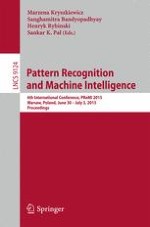2015 | OriginalPaper | Buchkapitel
Scalability of Data Decomposition Based Algorithms: Attribute Reduction Problem
verfasst von : Piotr Hońko
Erschienen in: Pattern Recognition and Machine Intelligence
Aktivieren Sie unsere intelligente Suche, um passende Fachinhalte oder Patente zu finden.
Wählen Sie Textabschnitte aus um mit Künstlicher Intelligenz passenden Patente zu finden. powered by
Markieren Sie Textabschnitte, um KI-gestützt weitere passende Inhalte zu finden. powered by
